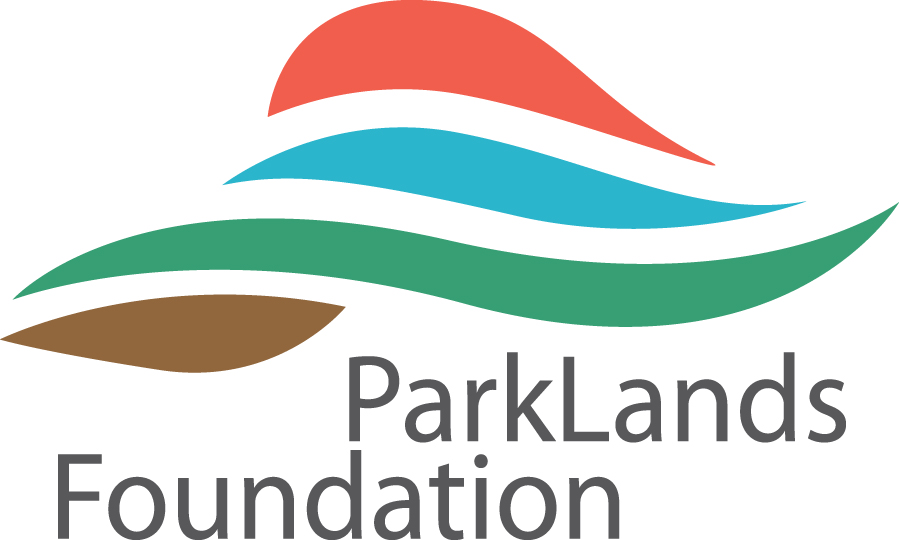Learn More About Letcher Basin
Landscape and Stewardship
As the name suggests, all 260 acres of Letcher Basin lie in a bowl surrounded by the high bluffs of the Mackinaw River corridor. 125 acres of the basin have been successfully restored as a tallgrass prairie. Like most prairies, grass species such little bluestem, big bluestem, and Canada wild rye are present, but this restoration is made unique by the density of forbs. Depending on the time of year, you will find seas of blooming wild indigo, spiderwort, pale purple coneflower, and compassplant. Rattlesnake master anchors much of the prairie.
Letcher Basin was a clean slate for ParkLands. Purchased in 2006 as marginal floodplain farmland, prairie seeds were conveniently sewn directly over the previous year’s corn stubble. Special care was taken to purchase seeds from a regional distributor that ensured phenotypes as close to the site’s original specimens as possible. This seed was mixed with potash and broadcasted using an industrial spreader.
Prairie restorations require patience. In the first year, weeds grew quickest as the native prairie plants invested energy in their deep root systems. Frequent mowing kept the weeds from going to seed. By year three, the native species began to take over and the prairie took shape. Subsequent plantings have occurred periodically until as recent as 2019. This prairie is a gem to behold and one of the best mimics you will find of our original Grand Prairie. In addition to the prairie, two savanna restorations are underway in the northwest and southeast sections of the preserve.
The ecological value of the restoration’s quality and scale are perhaps best evidenced by the diversity of wildlife found here. Bird surveys at Letcher Basin have documented one of the region’s densest populations of barred owls. Bald eagles have returned to nest at the preserve for many consecutive years. Could it be coincidence that the first nesting pair of eagles arrived two years after the first prairie planting?
The State-threatened mudpuppy (Necturus maculosus) has been recorded at Letcher Basin, as well as ten other Species in Greatest Need of Conservation (four bird species, a fish, and five mussels) as recognized in the Illinois Wildlife Action Plan (IWAP). Surveys have recorded 25 species of mussels, 26 species of fish, and 37 species of birds.
The Mackinaw River itself also forms a distinctive feature of this preserve. Letcher Basin offers more river frontage than any ParkLands preserve due to its nearly 360-degree bend around the basin. The public rarely has access to this much river habitat at once.
The flat trails of Letcher Basin can accommodate hikers of all skill levels. The main 2-mile perimeter loop is most popular as it parallels the river for much of its length. Worth noting is that the trail following the eastern border of the preserve is the actual path Abraham Lincoln took to cross the river during on his judicial circuit.
History
The 60-acres surrounding Wyatt’s Ford were purchased by ParkLands in the late 1970s and established our first landholding in Woodford County - a presence than has grown to more than 1,300 acres today. 140 acres of the preserve were purchased as marginal farmland in floodplain in 2006 with a $454,000 grant from Illinois Clean Energy Community Foundation. Around that same time, 52 additional acres were purchased by Dr. Matthew Fraker and Sherri Thornton and generously made available to the public through a permanent private conservation easement. Together, Letcher Basin Preserve was designated in 2014 as one of ParkLands’ three Illinois Land and Water Reserves for its diversity of species, river frontage, and overall ecological health.
Guy Fraker – honorary ParkLands board member, Abraham Lincoln scholar, and author of Looking for Lincoln in Illinois - beautifully documents how Lincoln’s route on the 8th Judicial Court circuit reveals the significance of the basin as a historical travel corridor. Before bridges, culverts, and drain tiles, early settlers had to endure treacherous waterways while traveling between towns. Parts of the river shallow enough for safe passage were known as fords. Historical maps show two fords at Letcher Basin: Rocky Ford in the northwest corner and Wyatt’s Ford to the southeast. Roads across these fords converged near the entrance to the basin. In fact, much of the perimeter trail follows decommissioned roads that were put in place by early settlers.
In Lincoln’s case, his circuit took him from Metamora to Bloomington twice per year for two decades, requiring him to cross the Mackinaw River each time. Lincoln and his peers would cross Panther Creek just north of the Kenyon-Baller Woods Preserve, occasionally stop at an inn in the now defunct village of Bowling Green (marked by a stone at the entrance of Kenyon-Baller Woods), follow the ridge that pinches between two swings in the river past today’s Ridgetop Hill Prairie Nature Preserve, before dropping into the basin. Lincoln then traveled the preserve’s eastern hiking trail, crossed Wyatt’s Ford, and ascended what is now Denman Road on his way to Bloomington.
The area was also a well-known trail intersection and camping ground of Native Americans. Numerous tools and other artifacts have been recovered from the site.
